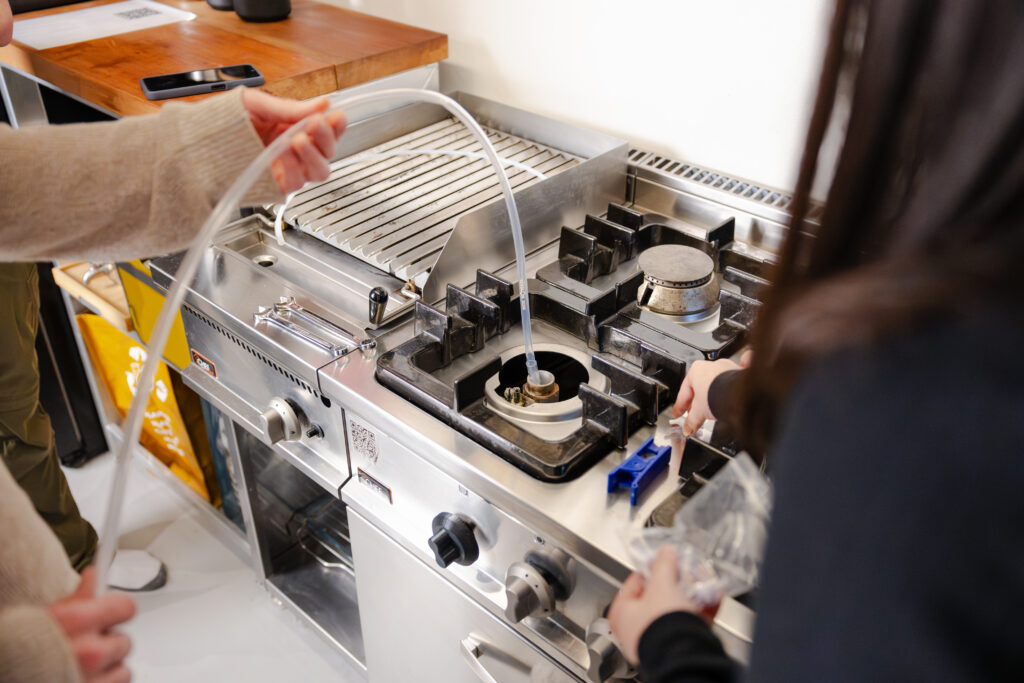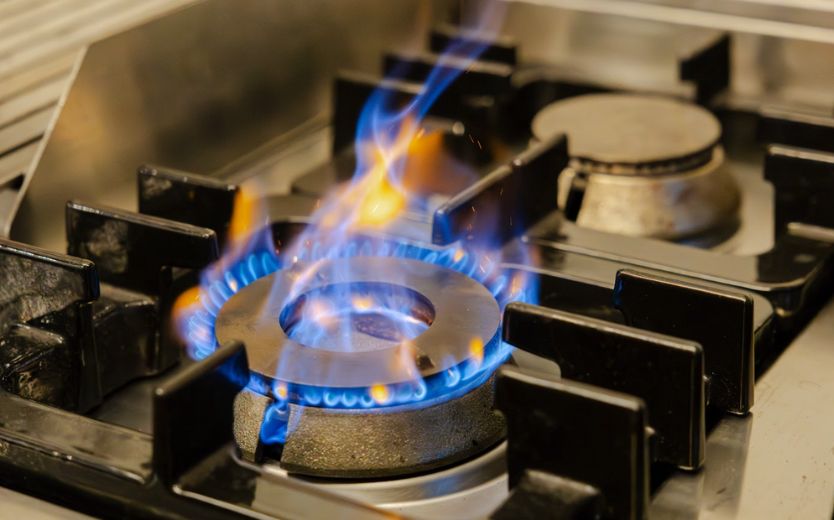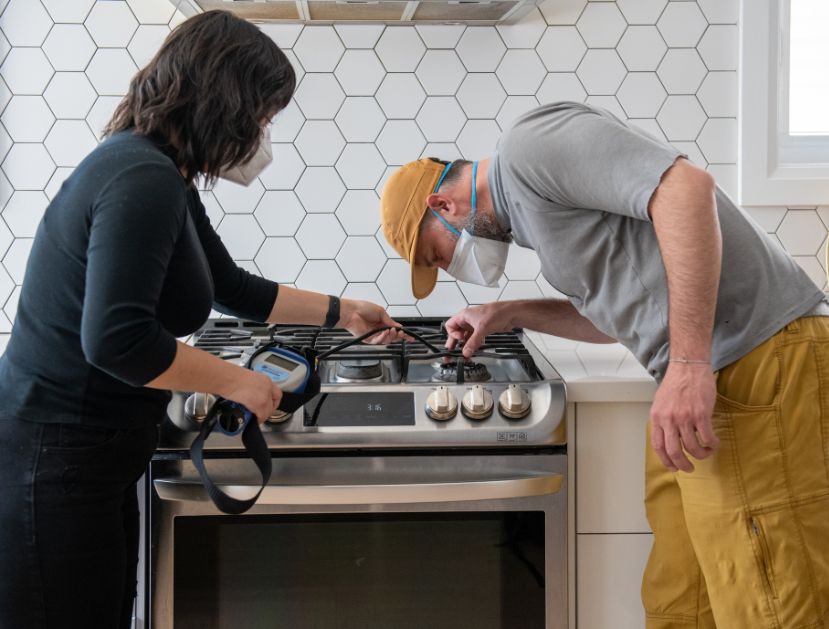Do gas stoves cause indoor air pollution?
Scientific research has linked gas stoves to a range of hazardous air pollutants and adverse health impacts, such as asthma. Gas stoves typically emit pollutants either through gas combustion or gas leaks.
What is in natural gas?
The primary component of natural gas is methane. Methane is a colorless, odorless, and highly combustible gas. It is also a powerful climate pollutant. In addition to methane, natural gas contains pollutants which are known to be toxic, linked to cancer, and can form secondary health-damaging pollutants that may impact air quality and human health. Additionally, natural gas is intentionally odorized using a variety of sulfur-based odorant compounds to aid in leak detection. To date, no comprehensive assessments have been performed on toxicity or human health risks of commonly used natural gas odorants.

PSE scientist collecting gas samples from a residential kitchen in Milan, Italy.
Does using a gas stove create indoor air pollution?
When you use your gas stove, the process of combusting natural gas creates a range of air pollutants, such as nitrogen oxides, benzene, and carbon monoxide. Nitrogen-based pollutants, such as nitrogen dioxide (NO2), are known respiratory irritants associated with the development of asthma. A 2024 study from Stanford and PSE Healthy Energy scientists estimates the annual societal cost of NO2 exposure from gas and propane stoves is $1 billion. Burning natural gas and propane has also been shown to generate benzene, a known human carcinogen. A 2023 study from Stanford and PSE Healthy Energy scientists found that a single gas cooktop burner on high could raise indoor levels of benzene above those in secondhand tobacco smoke.
Do gas stoves leak air pollutants?
Gas leaks occur when small amounts of unburned gas escape from the stove. Because this unburned gas contains a range of health-damaging air pollutants, these leaks may affect indoor air quality over time. A 2022 peer-reviewed study examined the rate at which natural gas stoves leak methane and nitrogen oxides during all phases of stove use: when the burners were off, when the burners were lit, and during the process of turning the burners on and off. The study found that more than three-quarters of the methane emitted from stoves occurred while stoves were turned off, suggesting that gas fittings and connections to the stove and in-home gas lines are responsible for the largest share of emissions from gas leaks, regardless of how much the stove is used. In total, the researchers estimate that natural gas stoves emit 0.8−1.3% of the total gas they use as unburned methane. Additionally, researchers found no evidence of a relationship between the age or cost of a stove and its emissions. The highest emitters were cooktops that ignited using a pilot light instead of a built-in electronic sparker.

PSE scientists conducting precombustion sampling in Milan, Italy.
What can I do to keep myself safe from gas leaks in the home?
If you smell gas or suspect a gas leak, it is essential that you immediately exit the building and call your gas company or emergency services to assess whether there is a leak in or near your home. Assuming there is not an immediate threat, getting an in-home natural gas leak detection survey performed by a licensed plumber or heating, ventilation, and air conditioning (HVAC) contractor can also help to verify that no small leaks are present. Additionally, increasing ventilation is a simple way to reduce the concentration of indoor air pollution. For example, opening windows or turning on a vent that exhausts outside can lower the risk of exposure to indoor air pollutants.
Explore Related Research
@PhySciEng
Stay informed!
Join our email list to receive updates
on PSE's work and news.





